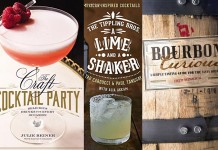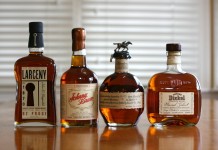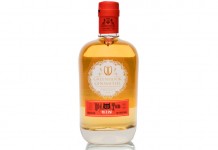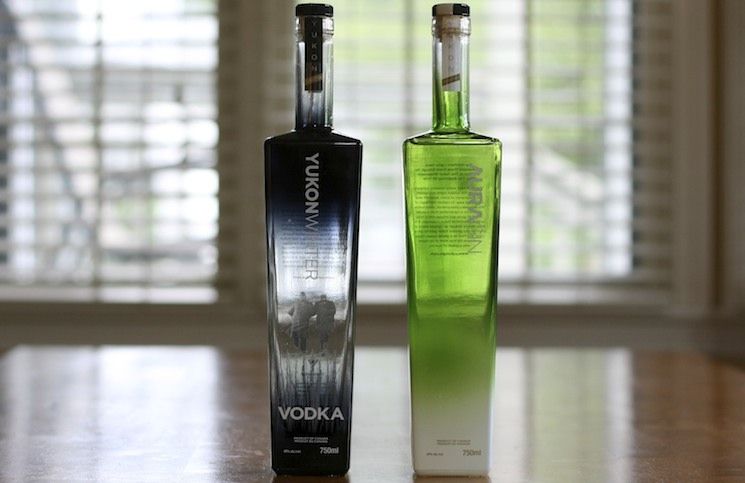
This was first written and circulated in 2009, by Ryan Magarian, one of the creators of Aviation Gin. He’s updated it to reflect the changing gin landscape, We feel it is one of the best discussions of New Western Gin and have agreed to publish it, in its entirety here.
What is New Western Dry Gin?
The New Western Dry Gin making philosophy seems to have evolved over the past 12 years as a result of efforts from both large brand houses and regional distillers in Europe and in the United States. In taking a good hard look at today’s rather loose definition of dry gin, these distillers realized a greater opportunity for artistic “flavor” freedom in this great spirit and are creating gins with a shift away from the usually overabundant focus on Juniper, to the supporting botanicals, allowing them to, “just about”, share center stage. And while the juniper must remain dominant in all dry gins to achieve definition, these gins are most certainly defined, not by the juniper itself, but by the careful inclusion and balance of the supporting flavors, creating, what I believe to be, an entirely new “character” designation of dry gin deserving of individual recognition.

Where did it come from?
As I see it, Tanqueray should be credited with bringing the first true New Western Dry Gins to market, initially with Malacca, which was quickly discontinued (perhaps because it was misunderstood), and later with Tanqueray Ten, an outstanding product, that I believe opened the door for a growing number of free thinking gin makers to have the confidence to become more creative with their personal interpretation of the storied spirit. Launched in 2000, the intent of this product was clearly to create a gin with a focus away from the juniper and onto it’s more mainstream citrus flavors, and, along with its stunning “vodka centric” packaging, it’s purpose was clear; To infringe on the success of a much larger spirit market; flavored vodka. This approach was next successfully realized when Hendricks Gin made a huge splash worldwide, drawing in the very same drinker with it’s promises of weighty flavors of cucumber and Bulgarian rose petal.
Alright, so I think it’s pretty clear that the New Western Dry Gin designation was born out of a desire by larger brand companies and savvy beverage marketers to sell more gin by appealing to a less adventurous drinker, the very same individual that dominates world spirit sales. And while many gin “traditionalists” continue to frown upon these tactics, I believe these two products have done us a huge favor and, as I stated before, have opened a door into an entirely new world of flavor potential for gin makers worldwide. And this has led to the release of a wide variety of artisan products, developed to showcase both exciting new levels of creativity, along with unique regional approaches to the creation of this spirit. Today, the New Western Dry Gin designation continues to evolve and I am extremely pleased to see that several are entering the market, not to take to advantage of the habits and preferences of a particular imbiber, but to first and foremost showcase the whim, talent, passion, and context of their makers
How are they made?
So, after looking at the cross section of New Western Dry Gins, I think most of them would fall into the Distilled Gin (Hendricks, for instance) and London Gin “production” designations (defined below,) which insure a high quality and fully integrated palate.
Key New Western Dry Gin Brand Descriptions:
Previous to the Juniperlooza Panel I moderated at Tales of the Cocktail in New Orleans in the summer of 2008, I laid out over twenty dry gins to figure out exactly which brands fell under this gin making philosophy/designation that I continue to feverishly attempt to better articulate. In doing this,I devised the simplest of equations in tasting through the bunch; If the first flavor I picked up was not juniper, but rather an alternative botanical OR if the juniper was in balance with the rest of the flavors, I placed it under the New Western Dry Gin Character Designation. If the juniper was the first thing I picked up and clearly dominated the flavor profile, front to back, than I classified it in the Classic Dry Gin Character Designation. In completing, this task, I was surprised to find that several dry gins that I suspected were New Western’s, were in fact what I would consider Classic Dry Gins, which really goes to show how susceptible any of us can be to packaging and word of mouth. The following are my findings:
Readily Available New Western Dry Gins
Tanqueray No. Ten, Bluecoat Gin, Aviation Gin, Hendricks, G Vine (both bottlings), and Martin Millers,

Mistaken Identity/Modern Dry Gins that I had suspected were New Western Dry Gins, but in fact, I believe, fall into the Classic Dry category based on heightened Juniper presence.
Citadelle, Old Raj, No. 209, Magellan, and Damrack
A Quick Word About Gin “Production” vs. Character “Designations”:
Over the past three years, I believe I haven’t been clear enough in articulating my perspective of the difference between production and character designations which you will now find below.
American Production Designations
Gin is a product obtained by original distillation from mash, or by re-distillation of distilled spirits, or by mixing neutral spirits with or over juniper berries and other aromatics, or with or over extracts derived from infusions, percolations, or maceration of such materials, and includes mixtures of gin and neutral spirits. It shall derive its main characteristic flavor from juniper berries and be bottled at not less than 40% ABV. Gin produced exclusively by original distillation or by re-distillation may be further designated as “distilled”. “Dry Gin” (London Dry Gin), “Geneva Gin” (Holland Gin), and Old Tom Gin” (Tom Gin) are types of gin known under such designations
European Production Designations
All gins are made with ethyl alcohol flavored with juniper berries and other flavourings. The ethyl alcohol used must be distilled to the minimum standards stated in the EU Spirits Drink Regulations. In all types of gin; the predominant flavor must be juniper, and they must have a minimum of 37.5% alcohol by volume. Below are specific EU Production Designations
Gin – Gin is made from:
- Suitable ethyl alcohol and flavourings
- The ethyl alcohol does not have to be redistilled
- The flavoring can be either approved natural or artificial
- The flavorings can simply be mixed together with ethyl alcohol to form gin (Compounded)
- There is no restriction on the addition of other approved additives such as sweetening
- Water is added to reduce gin’s strength to the desired retail level, but not below 37.5% abv.
Distilled Gin – Distilled Gin is made in a traditional still by:
- Redistilling neutral alcohol in the presence of natural flavourings
- There is no minimum strength laid down for the resulting distillate
- After distillation, further ethyl alcohol of the same composition may be added
- Additional flavorings may be added after distillation and these can be either natural or artificial flavorings
- The distillate can be further changed by the addition of other approved additives since there is no prohibition on their use in the definition
- Water may be added to reduce the strength to the desired retail level
- There is no restriction on the colouring of distilled gin with approved colorings
London Gin – London Gin is made in a traditional pot still by re-distilling ethyl alcohol in the presence of all natural flavors used
- The ethyl alcohol used to distil London Gin must be of a higher quality than the standard laid down for ethyl alcohol. The methanol level in the ethyl alcohol must not exceed 5 g. per liter of pure alcohol.
- The flavorings used must all be approved natural flavorings and the must impart the flavor during the distillation process
- The use of artificial flavorings is not permitted
- The resultant distillate must have a minimum strength of 70% abv
- No flavorings can be added after distillation
- Further ethyl alcohol may be added after distillation provided it is of the same standard
- A small amount of sweetening may be added after distillation provided all sugars do not exceed 0.5g per litre of finished product (the sugar is not discernible and is added to some products purely for brand protection services only.)
- The only other substance that may be added is water
- London gin cannot be colored
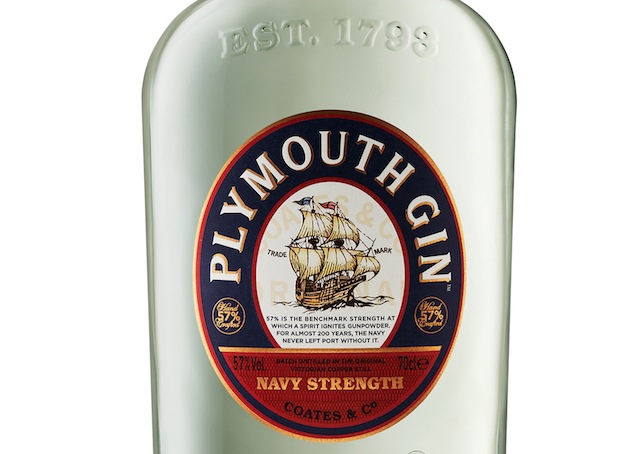
Plymouth Dry Gin
This gin is both a brand and Designation of Origin, meaning it must be made in Plymouth, England.
Character/Flavor Designations
Classic Dry Gin
Nearly every gin on every back bar today falls into this category and are defined by their predominant juniper flavor profiles with the supporting botanicals playing an extreme secondary role. Examples included Tanqueray, Beefeater, Gordon’s, and Plymouth
New Western Dry Gin
Gins with a shift away from the usually overabundant focus on Juniper, to the supporting botanicals, allowing them to, “just about”, share center stage. And while the juniper must remain dominant in all dry gins to achieve definition, these gins are most certainly defined, not by the juniper itself, but by the careful inclusion and balance of the supporting flavors, creating, what I believe to be, an entirely new “character” designation of dry gin deserving of individual recognition.
Conclusion/Why is establishing this new “character” designation so important?
Since launching Aviation Gin, a gin just about everyone will agree, is way out on the fringe of modern gin making, my mind has been in overdrive not only working to truly understand the nuances of the long existing Dutch, Old Tom, and Dry Gin styles, but in articulating a place for mine and other similar gins to reside.
Just over 5 years ago, this whole New Western Dry Gin notion became crystal clear to me and, I believe, the establishment of this or a similar designation (whether the name New Western, itself, sticks or not)benefits the gin category for two reasons:
1) Identity – In order for any product to find a market, it must have a clear identity making it immediately recognizable to its potential consumers. In my opinion, for the Aviation’s, Hendrick’s, and other gins discussed above to have any chance at long term success, they need to have a recognized designation of their own, clearly identifying their uniquely balanced flavor perspectives which will in turn, allow potential consumers a easy understanding of these products and how they differ from others in the category for years to come.
2) Protection – With so many New Western Dry Gins entering the market, many that may or may not actually be “gin”, I remain concerned the unless a clear designation is created for these gins, the entire category might find itself not only diluted, but more dangerously unrecognizable ten years from now. Creating the New Western Dry Gin designation protects all other character designations and insures each one’s individual growth for years to come
– Ryan Magarian, Liquid Relations
Check out our reviews of New Western Dry Gins also watch our video on The History of Gin.







